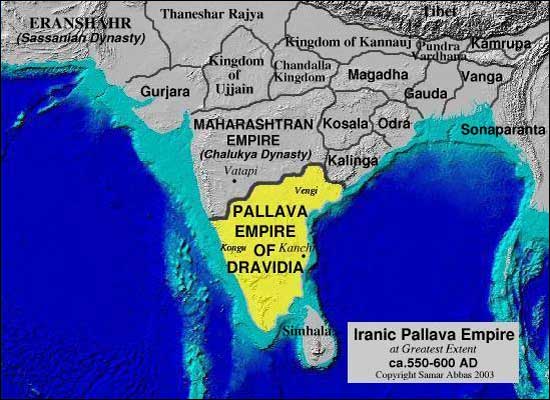
The Pallava dynasty was a prominent South Indian dynasty that ruled parts of present-day Tamil Nadu and Andhra Pradesh from around the 3rd century CE to the 9th century CE.
Origin and Early Period: The Pallavas originated as feudatories of the Satavahanas and rose to power in the southern regions of India, establishing their capital at Kanchipuram.
Simhavishnu: The first historically attested Pallava ruler was Simhavishnu (circa 275-300 CE), who is credited with consolidating Pallava power and expanding their influence in the region.
Mahendravarman I: Known for his patronage of art, literature, and architecture, Mahendravarman I (circa 600-630 CE) initiated the rock-cut temples at places like Mahabalipuram (Mamallapuram), which are UNESCO World Heritage sites today.
Narasimhavarman I (Mamalla): He was one of the most famous Pallava rulers (circa 630-668 CE) and is known for his military exploits, including the defeat of the Chalukya king Pulakeshin II, resulting in the expansion of Pallava territories.
Cultural Contributions: The Pallavas were great patrons of Dravidian architecture, which is evident in their rock-cut temples, monolithic rathas (chariot temples), and structural temples adorned with intricate sculptures and carvings.
Relations with Chalukyas and Cholas: The Pallavas often clashed with the Chalukyas of Badami over territorial control in the Deccan. They also had significant interactions with the Cholas, with occasional alliances and conflicts marking their history.
Decline: The Pallava dynasty declined in the 9th century due to invasions by the Rashtrakutas and internal revolts. Their territories were eventually annexed by the Chola dynasty, marking the end of their rule.
Legacy: Despite their decline, the Pallavas left a lasting legacy in South Indian art and architecture. Their temples, sculptures, and inscriptions provide valuable insights into their cultural and religious practices during their reign.
Administration: The Pallavas had a well-organised administrative system, with local governance based on administrative divisions called Nadu, and efficient revenue administration.
Literary Contributions: They contributed to the development of literature in Tamil and Sanskrit, with notable works like the Sanskrit play "Mattavilasa Prahasana" attributed to Mahendravarman I.
The Pallava dynasty's contributions to art, architecture, and literature have had a profound impact on the cultural heritage of South India, influencing subsequent dynasties and shaping the region's history.
